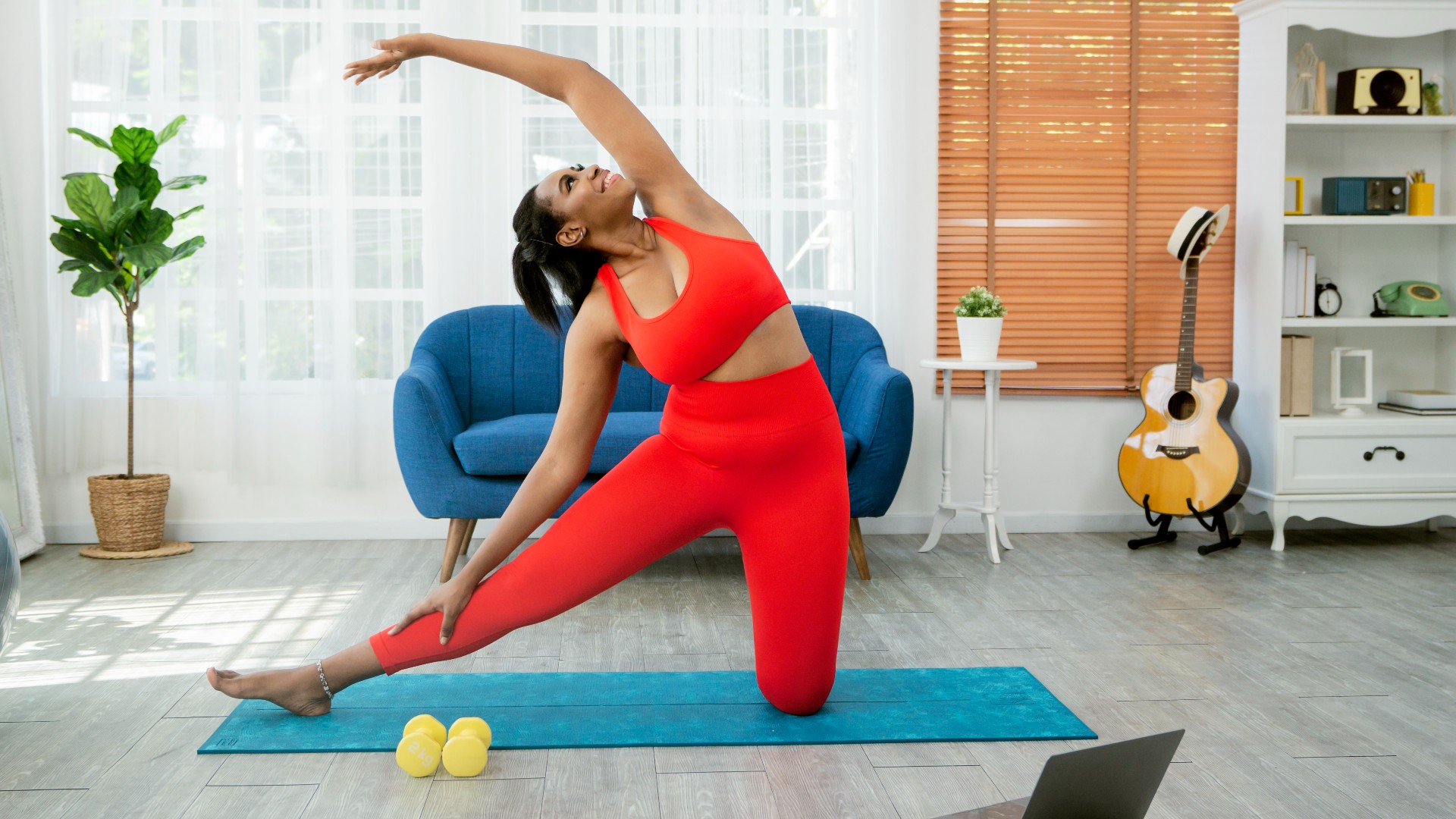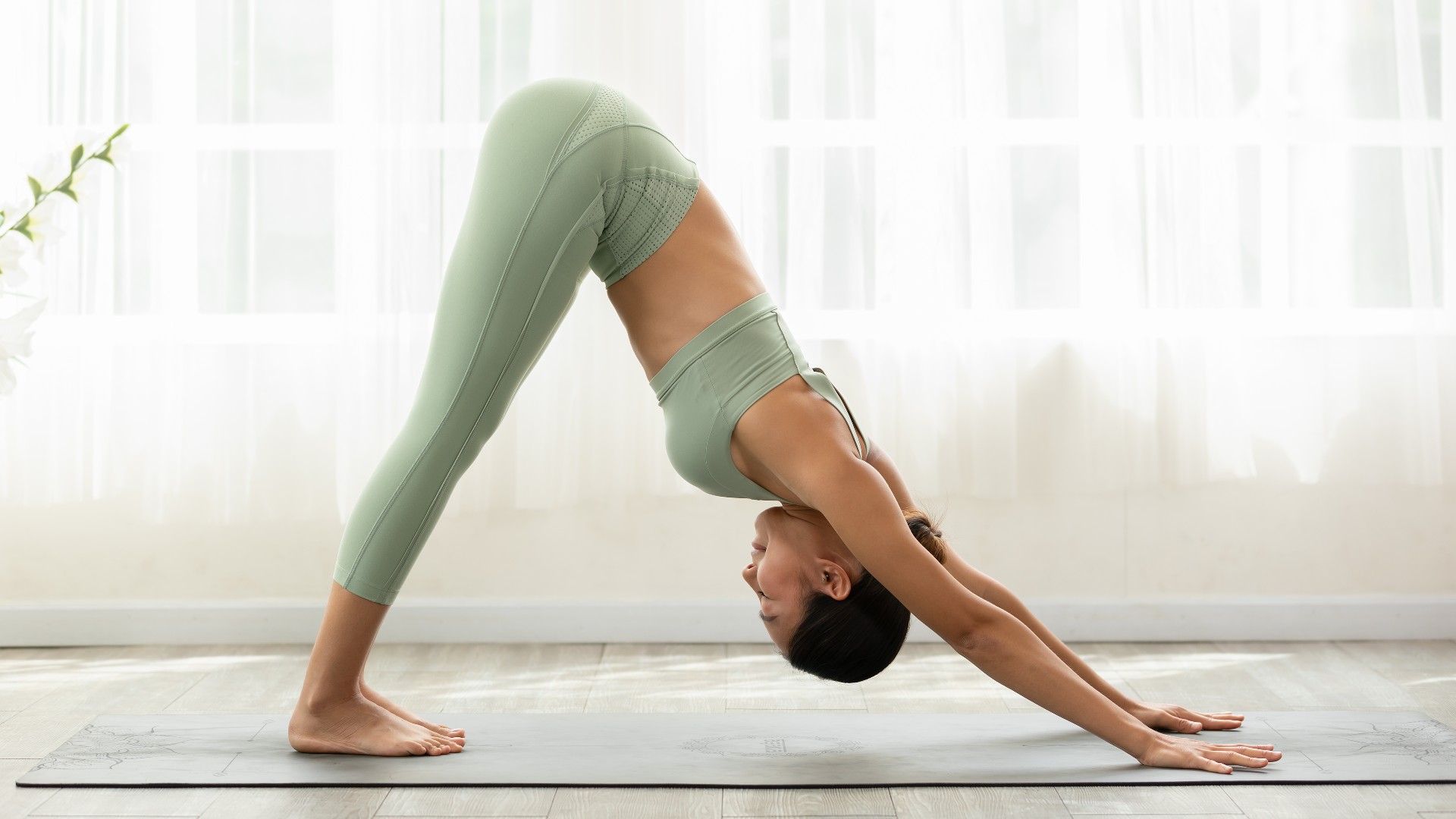Is yoga strength training?
We know yoga can be great for improving flexibility, but is yoga strength training? We consulted the experts

If you’re a seasoned yogi, you’ll know how challenging certain positions can feel — but is yoga strength training? Poses such as Tree Pose, Crow and Scorpion certainly require a lot of skill, and while we know yoga can be great for improving balance, alleviating stiffness and relieving stress, many of us wonder whether our muscles also benefit when we hit the mat.
Before starting out with your yoga practice, ensure you have the core components sorted. That means adding the best yoga mats to your basket, having all the equipment you need to hand, such as yoga blocks and straps, and making sure you’re wearing a pair of stretchy, yoga-friendly leggings.
To discover whether there’s a link between regular yoga practice and muscle gain, we asked some experts. They addressed whether yoga is strength training, what exercises you should do alongside your yoga practice and what you can do to make your poses feel more challenging. Read on to find out more.
Does yoga count as strength training?
“Whether yoga counts as strength training often comes down to individual needs, fitness goals and current fitness levels,” says physiotherapist Katie Knapton, founder of Physio Fast Online.
“If you are currently not doing any fitness activity, then the answer is yes. Introducing yoga can be part of your strengthening regime. But if you’re already doing significant resistance training and have a good base level of fitness, then yoga is unlikely to make a difference in strength.”

Knapton qualified from King's College hospital in 1991 and then worked at Guy's Hospital, London. Specialising in musculoskeletal injuries, she was then employed at St. George's Hospital where she worked as a specialist physio alongside Orthopaedic Consultants. Since 2002, she has worked in private practice.
A study in The Journals of Gerontology showed that while a regular three times a week yoga practice can cause some muscle increase, it’s not an effective full-body strength training exercise in the long run.
“There are a lot of ‘push’ actions in yoga and not much pulling,” says Senior Yoga Teacher Laura Pearce. “In order to find more of a strength balance, I like to find ways to strengthen the posterior chain as much as possible, and the upper back (the muscles usually involved with pull actions).
Get the world’s most fascinating discoveries delivered straight to your inbox.
“One of the best ways to do that is with active backbends. Locust pose variations are great back extensions. They require you to actively engage the back body in a back extension that is usually held for quite a long time. You can also try a bow pose without holding the feet, just actively reaching towards them – this is great for strengthening the whole of the back body.”

Should you do strength training exercises alongside yoga?
“In general, I would recommend doing both strength training alongside yoga as this combination benefits from both the targeted muscle strengthening of resistance/strength training and the balance and flexibility of yoga, so it’s an overall win-win situation,” says Knapton. “To maintain an optimum training regime it is great to have variety and avoid plateauing, so combining both enables this.”
It’s a good idea to train two to three times a week to achieve strength gains, says Knapton. “Strength training is excellent at targeting age-related muscle weakness, strengthens bones, and can help with flexibility. When you combine this with yoga, you are also adding more flexibility and balance into the mix. Certainly, as you progress, bringing in regular strength training would be hugely beneficial.”
What are the best poses for building strength in yoga?
“There are many yoga poses that can help strengthen the core,” says James Brady, Yoga Teacher at OriGym. “Yoga poses such as the ones below can target specific areas of the body, depending on what muscles you want to strengthen.”
- Four Limbed Staff Pose (Chaturanga Dandasana) is great for strengthening arms and shoulders.
- Side Plank Pose works to build arm strength.
- Reverse Tabletop Pose (Ardha Purvottanasana) can build core, arm, and leg strength.
- Boat Pose (Paripurna Navasana) is another great one for core strength.
- High Lunge helps to strengthen legs.
- Forearm Plank builds arm, core, and leg strength.
“Inversions such as forearm balance (pincha) and a handstand are the ultimate strength poses in yoga,” adds Pearce. “They require a huge amount of upper body and core strength, as well as good shoulder and hip mobility, which is why so many people find these postures so challenging. They're tough for novices to practice, but there are ways to change these inversions. Practicing holding yourself upside down against a wall is a great strengthening practice, and there are also props you can buy that help you get upside-down more easily.”

How can you make yoga more challenging?
“If you want to level up your time on the mat, there are a few things you can do to help,” says Brady. “Some ways to elevate your yoga practice are listed below.”
- Practicing in a hot room - A hot room makes muscles warmer and more flexible, allowing you to achieve deeper stretches you may not achieve in a cooler room.
- Increasing the time you hold each pose for - Although this sounds simple, it can make a big difference to your workout. By doing this, you'll spend more time increasing your strength and flexibility in a certain pose. It also gives you more time to focus on your breathing.
- Introducing deep breathing into your practice - You can use this as an opportunity to improve your respiratory system by slowly inhaling through the nose and exhaling out the mouth. Deep breathing also allows you to focus on your breathing, stopping you from becoming distracted during your session.
- Practicing with a friend - Another great way to make yoga more challenging is by doing paired poses with a friend or a partner. This can be both fun and a source of motivation, as they can encourage you to try new poses and hit your fitness goals.
Stacey Carter is a Freelance Health Writer who has written print features and digital content for titles such as Woman & Home, Natural Health, Women’s Health, Get The Gloss, and Stylist. You'll find her covering a wide variety of health-based topics, talking to leading figures in the fitness industry, and investigating the latest trends in wellness. When she’s not at her laptop, weekend hikes, testing out new recipes in the kitchen and LISS-style workouts are her favourite ways to switch off.



